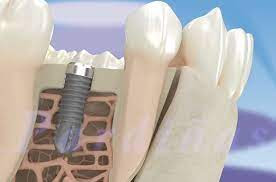The Global Osseointegration Implants Market Continues To Grow Owing To the Increase of Joint Replacement Surgeries in the Geriatric Population Worldwide
Osseointegration
implants are used in the direct physical and structural connective link between
the living tissue and the supporting structure of an implanted load-bearing
device. Osseointegration implants are devices, which help in building pressure
between two rigid objects, it also helps in the mechanical process by which the
material is shaped into its required shape and size and kept that way as it
stays in that shape. The human body is a complex system comprised of many
bones, teeth, muscles, cartilage, ligaments, nerves, blood vessels, and organs.
All of these structures are connected and depend on each other for proper
function. As a result, wear and tear on any single structure can cause damage
to all or some of the other structures and systems. The concept of osseointegration
was developed to help resolve this problem and has now become a part of most
quality surgical practices.
Owing to increasing
numbers of joint replacement surgeries, mainly among the geriatric population
is augmenting the growth of the global osseointegration implants market. For
instance, according to OrthoSpineNews, around 40% of the world population,
especially those, who are over 55 years, suffer from chronic knee pain. Among
these around50.8 million suffer from immense pain and around 2.6 million opts
for knee replacement surgeries every year. Moreover, the key market players are
focusing on developing better solutions and are opting for mergers and
acquisitions to provide accurate care to patients, which is creating propulsion
in the global osseointegration implants market.
Osseointegration
involves the mechanical opening of the soft tissue pocket through which
pressure is exerted. A needle is first used to inject a highly adhesive
material into the pocket which is then gradually withdrawn as the implant
shrinks towards the bone. The process is gradual because the shrinking takes
place in a coordinated fashion within the bone allowing a gradual,
non-permanent change in the entire structure. This results in the creation of a
new bone structure, which is almost always in a perfect, straight position.
However, the high cost of implant surgeries and inadequate reimbursement
coverage are the main factors, which are posing a threat to the growth of the
global osseointegration implants market.
Owing to the increasing
numbers of joint replacement surgeries in the region, North America is
witnessing high demand in the global osseointegration implants market. For instance, according to Memphis
Orthopaedic Doctors & Surgeons (Campbell Clinic), in the U.S. around
700,000 knee replacement and 400,000 hip replacement surgeries happen every
year. Moreover, the government is focused on providing patients with full
medical coverage insurances, which is driving the growth of the market. Owing
to all these factors, there has been significant development in the global
osseointegration implants market. For instance, in 2018 May, Dentsply Sirona
and Datum Dental, Ltd, entered into a distribution agreement.




Comments
Post a Comment